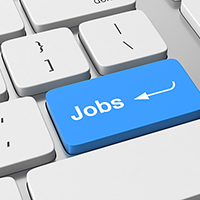 Evidence from previous stimulus bills in 2001 and 2008 shows that much of the money was saved or used to pay down debt rather than inject cash into the economy, says a Purdue University economist. (Stock image)
Evidence from previous stimulus bills in 2001 and 2008 shows that much of the money was saved or used to pay down debt rather than inject cash into the economy, says a Purdue University economist. (Stock image)
Spending Wisely
Three ways the stimulus package could be more effective
As businesses closed and unemployment rose during the coronavirus outbreak in the United States, Congress passed a $2 trillion stimulus package that includes direct payments to Americans based on income and family size.
These direct payments are sometimes called tax rebates and other times they are called cash transfers, but by any name they are the best way for the government to get money to households quickly.
 But evidence from previous stimulus bills in 2001 and 2008 shows that most of the money sent as direct payments was saved or used to pay down debt rather than being injected into the economy, says Associate Professor Kevin Mumford, the Kozuch Director of the Purdue University Research Center for Economics. He believes there are three ways that direct payments could have a greater economic benefit:
But evidence from previous stimulus bills in 2001 and 2008 shows that most of the money sent as direct payments was saved or used to pay down debt rather than being injected into the economy, says Associate Professor Kevin Mumford, the Kozuch Director of the Purdue University Research Center for Economics. He believes there are three ways that direct payments could have a greater economic benefit:
Salience: Mumford has written about how the prominence, or salience, of tax credits can influence how taxpayers respond.
“When people hold the physical check or receive a letter telling them that a large sum was deposited into their account, you’ve got a better chance of having economic impact,” he says. “A payroll tax cut has low salience and does nothing for those who can’t work.”
Spending: Only about a quarter of the stimulus money in 2001 and 2008 was spent within the following three months, Mumford said. Unlike then, consumers are even less likely to spend their stimulus checks as they shelter in their homes and as businesses close their doors due to the spread of the virus, he adds.
“People are spending a lot less,” he says. “Is the reason that they don’t have enough money, or is the reason that they are following the instruction to stay at home? Direct payments will not have a large effect on aggregate demand, but should instead be thought of us social insurance.”
Targeting: Sending checks to every American is administratively easier, but less effective and much more expensive, he says.
“The more targeted the stimulus is at those who most need the money, the better,” he says. “Those most likely to spend the money are those whose jobs have been furloughed, or they’ve been let go. The people who would be most likely to spend the money are those who are most in need.”
If targeting is too administratively complicated, the direct payments should be taxed back from households who don’t see a decline in earnings after the crisis is over, he adds.
“Now isn’t the time to worry about the size of the government debt, but we need to worry about it once we get through this,” he says.
Next: How malls and department stores can survive the growing number of COVID-19 lockdowns







